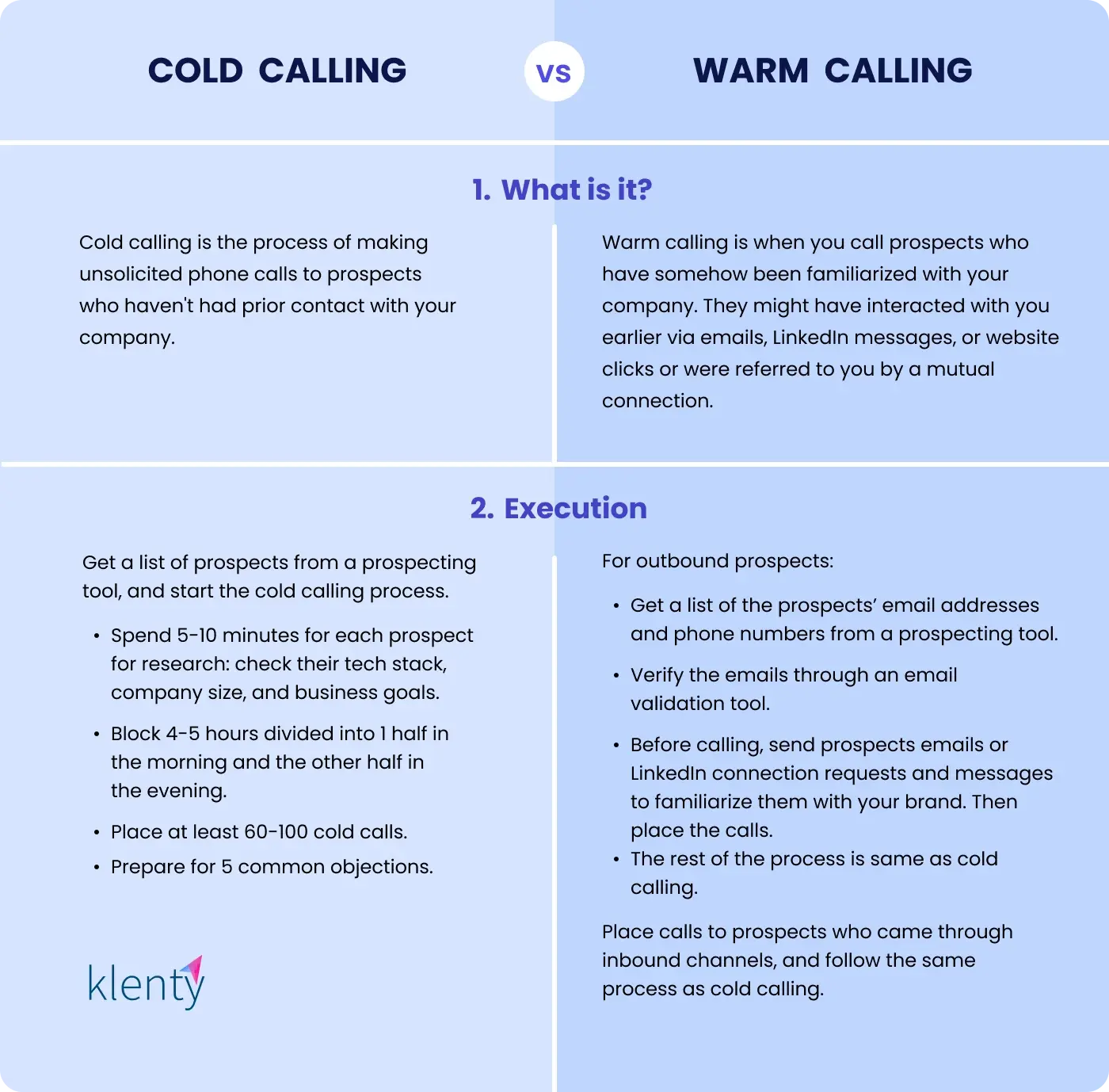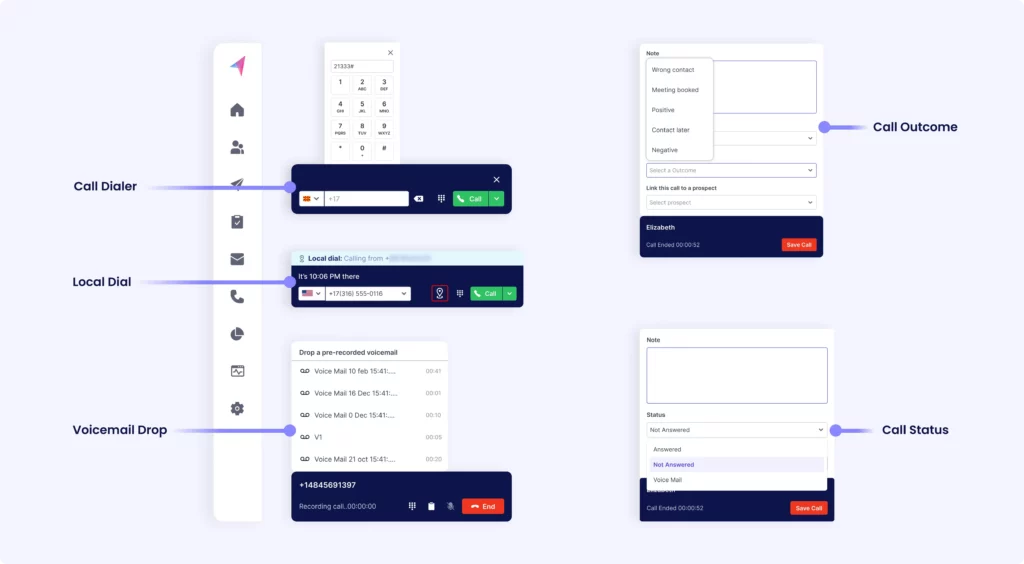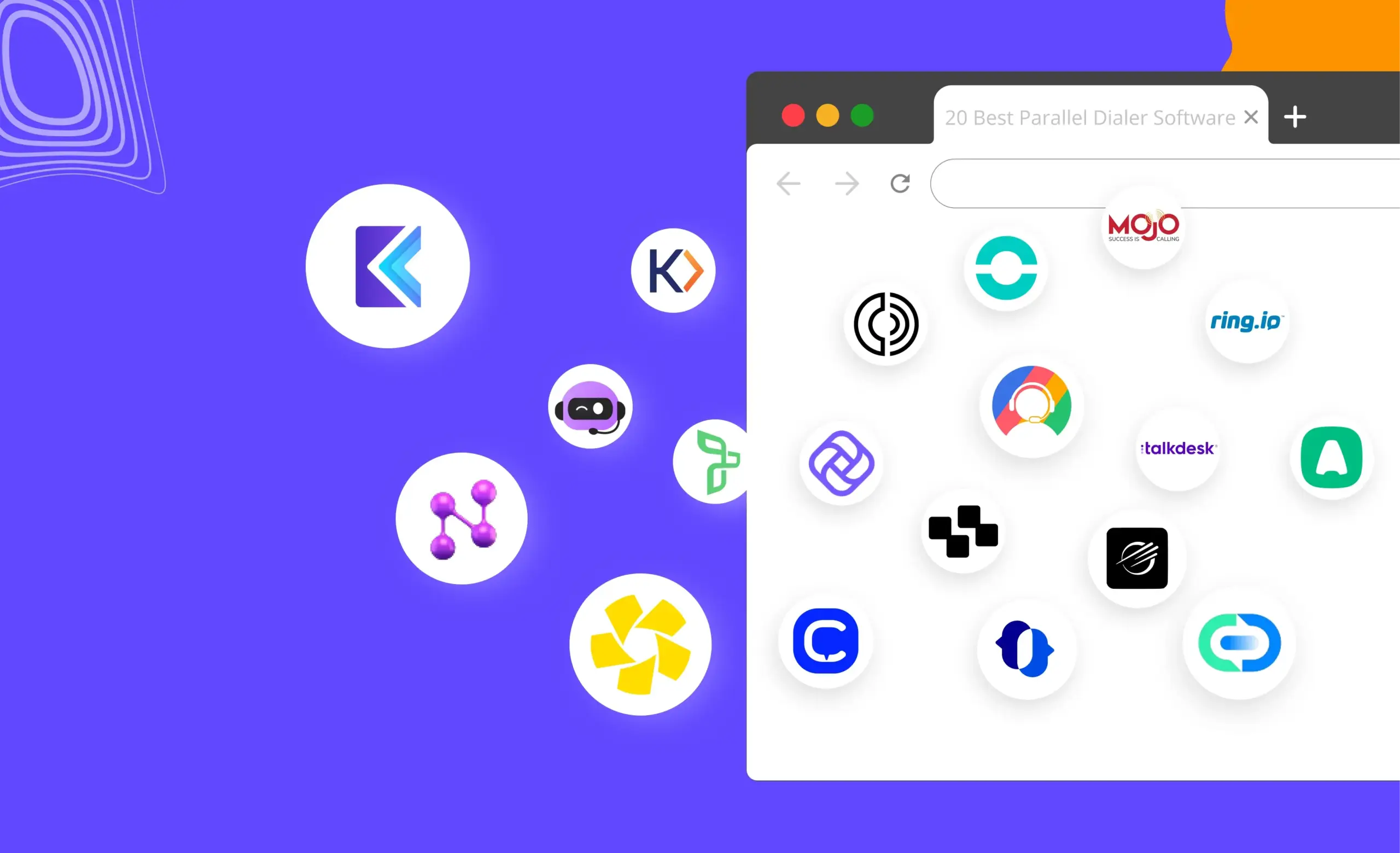Let's settle this once and for all. Cold calling vs. warm calling—which strategy reigns supreme?
It's like a battle of fire and ice. When you dive into the icy waters of cold calling, you must swim through a sea of rejection. But navigate well, and you can reach lands abundant with potential customers.
Whereas warm calling is a lot like prepping for a scenic trek. You need to do the grunt work to establish relationships with your prospects. But the view (we mean prospects who are less likely to reject your proposition, of course) is well worth the effort.
So which path will you take?
Here we'll share the differences between cold calling and warm calling and uncover which is the best path for when crafting outbound sales strategies for different industries and business types.
What Is Cold Calling?
Cold calling is the process of making unsolicited calls to people who do not know you or your company in hopes of booking a meeting with them to sell your product or service. It's like arriving at a party uninvited, looking to score some leads, and introducing yourself all the while hoping nobody escorts you out.
But who in their right mind would willingly subject themselves to this? Well, at least 6.3% of all your prospects. This makes it an excellent lead generation approach. In our experience even better than cold emailing. After all, the latter has a mere 0.5% success rate.
Cold calling example: Suppose you're a sales representative for an app that helps people monitor their calorie intake. You start the sales process by calling people invested in health and wellness, like gym-goers, nutrition enthusiasts, etc. You'd introduce yourself, explain the value of having a health monitor on you, and convince your prospects to download it on their phones.
What Is Warm Calling?
Warm calling is the process of reaching out to potential buyers who have been familiarized with your brand. Contrary to the cold sales call, here the prospect isn't a complete stranger. These prospects have interacted with some kind of communication from your business before the call.
In the B2B context, to make warm calls, either retarget pricing page visitors with ads or send them cold emails and follow-ups in advance so they get a chance to acquaint themselves with your brand.
Warm calling example: Suppose you’re a sales rep for a sales engagement software. you can put prospects into a sales sequence full of multichannel outreach steps. And in the 3rd or 4th step, after you’ve reached out to them via cold email, and sent a connection request on LinkedIn, you could call them up.
So why take the pain of cold calling when warm calling is so much, well, warmer? For starters, it is better at roping in new leads. For more info, let’s dive in.
Cold Calling vs. Warm Calling: What's the Difference?
Both cold and warm calling have one common goal—reaching out to potential customers. There’s only very little difference between. Here are the factors that make them different.

How To Make a Cold Call Warm?
Cold calling might seem icy. But it doesn't have to be. With the right approach and a few simple cold calling tips, you can turn your cold calls warmer than a cup of hot chocolate on a chilly morning. Here's how:
1) Know Your Prospect Before Dialing Their Phone Number
It's like trying to solve a mystery—what are your prospect's pain points and how can you best solve them? Knowing this information is key to closing deals quickly. It'll help you tailor your sales pitch to your prospect's needs and show them that you're genuinely interested.
Here’s how to do prospect research:
- Check out their social media profiles for info on their roles and responsibilities or personal interests
- Browse their company website to get contact information, and learn about business goals, their needs and teams
- Run a quick Google search to find out the latest updates of their company, etc.
Pro tip: Alastair Chamberlin, SDR Manager at Zinc, studies the 10-K reports of companies before cold calling them. This is a quick way to access all important information like their financial performance, recent deals, mergers, and acquisitions, etc.
This is particularly handy for enterprise sales teams reaching out to C-level executives. These reports equip them with 3 key details:
- Their business goals
- Their priorities
- Their main focus for the year ahead
2) Connect via Cold Email Before the Cold Call
Cold calling can be nerve-wracking. But one strategy that can help ease the tension is adding multiple touchpoints before making the actual cold call.
A cold touch point is simply interacting with the prospect on other platforms that they often visit before you call them. This could be via an email or a LinkedIn message. The goal is to familiarize them with your brand. But don't just send a boring old text message.
Here are some ideas to jazz up your cold touchpoints:
- Send a personalized video message
- Create a personalized meme
Put on your creative hat to make the process more enjoyable and grab your prospect's attention.
3) Don't Be Dull and Drab
Your prospects won’t entertain a call that sounds spammy or nervous. So:
a) Lead With Confidence
“People will stay on the phone with someone who’s very confident,” asserts Sam Holeman, one of Momence’s top-performing SDRs. According to him, delivering the opener with the optimum level of confidence is essential as it gets your prospects to engage with you better.
b) Add Personality
Let your personality shine. Pretend you're talking to a friend. For example, would you lead with, “Hey, I’m [name] from [company name].” Or ask, “Hey, how have you been?” (Gong found that people that used the second opening line saw a 6.6% higher success rate!)
Putting your prospect at ease will make them more likely to engage with you. And here are a few simple ways to do this:
- Smile while talking: Yes. We know. Your prospect can't see you. But believe us, it will make a huge difference in how you sound—more friendly and approachable. Plus, it'll make you feel more confident and positive.
- Make humor your best friend: Adding humor to your pitch is a great way to break the ice and instantly warm your cold calls. Make a joke or share a funny story. But don't overdo it, or you'll come across as unprofessional.
Pro tip: Joel Thomas, Almabase's top-performing SDR, recommends starting your sales calls with a question to pique your prospect's interest. For example, “This is Joel from Almabase. Could you help me out for a moment?”
4) Warm Up Your Introduction
Put your research to use and personalize your cold calling opener. This shows the prospect that you've done your homework and mean business.
You can start with a common link or a shared experience to connect with your prospect. If you can't find common ground, starting with a compliment is a safe sales strategy. How can you compliment a prospect? Start with a recent company achievement or a specific project that the prospect worked on.
For example, "Hi [Prospect’s name], I saw your recent press release about the launch of your new product. Love the dedication. But that probably means things are busier than usual. Have a moment to chat?"
5) Respect Your Prospect's Time
No matter how solid your pitch is or how awesome your product is, you're interrupting your prospect's schedule at the end of the day. So, always ask if it's a good time to talk and get to the point ASAP.
Even better if you start your conversation with the line “The reason for my call is..” Gong’s study suggests using this phrase alone increases an SDR’s success rate by 2.1X.
Why? Because it’s human nature to seek reasons, and this one sentence puts your prospect’s mind to rest. This kind of approach cuts to the chase, it proclaims to the prospect what your intentions are from the get go. That transparency will instill trust in the prospect.
If your prospect is busy, offer to schedule a follow-up call at a more convenient time. This will show them you value their time and aren't another salesperson trying to shove a product down their throat.
Pro tip: Lead with empathy in cold calls. Owing to the cold nature of cold calls, Zinc’s SDR Manager, Alastair Chamberlin reveals he begins them with a warm approach. Like, “Hello, I know you weren’t expecting my call. But if you’ve got a minute, I can tell you why I’m calling. And then, we can decide if it makes sense for us to continue the conversation.” This approach, he says, typically makes prospects interested enough to hear the pitch.
When To Use Warm Calling and Cold Calling?
We recommend warm calls for SaaS sales representatives. It’s the new black. Today’s buyers are wary of corporate hullabaloo and rely more on peer reviews to make buying decisions.
Case in point, a TrustRadius survey showed 55% of B2B buyers relied on user reviews and 37% used community forums to make purchase decisions. In such a scenario, it’s better to focus on building relationships with prospects over pitching, i.e., warm calling over cold calling.
But of course, there are scenarios where cold calling suits better than warm calling or vice versa. Here are they:
Cold Call When:
- your outbound engine is thinly resourced.
- you’re targeting a new market and want to test its waters without fully having to invest in marketing activities.
Warm Call When:
- you want to increase your cold calling efficiency
- you’re in a crowded market and want to stand out
- your marketing team is belting out resources that are valuable to prospects (send these as part of your cold emails to hook prospects)
Is Warm Calling Better Than Cold Calling?
In the modern B2B SaaS world, warm calling is miles better than cold calling. It makes your B2B sales calls less intrusive to prospects. They’ll have a better recall of your brand, which in turn gives you a better chance at booking meetings. It’s generally better because, in such a crowded space, those reps that take on a consultative selling approach usually win.
Here’s a recap on how you can warm up your cold call:
- Add email and LinkedIn steps to your sales sequence before the cold call
- Send valuable downloadable assets to the prospects to gain their trust
- Send connection requests on LinkedIn and view your prospects’ profiles
- Spend 5 minutes researching each prospect before calling them, and use the info to personalize your cold call
That’s all, folks.
Automate Your Warm and Cold Calls With Klenty
Whether it is cold calling or warm calling, picking up the phone and dialing number after number manually can be tiresome. There are numerous reasons for this, such as manually dialing each number, creating individual voicemails for every prospect, entering call information into the CRM, and more.

Klenty solves this by boiling down your call tasks to just a single click. With Klenty's Sales Dialer, you can call prospects directly from the browser without the need to pick up the phone.
What's more, you can pre-record all your voicemails, making it easy to drop them off to your prospect in case they do not respond.
Klenty’s Local Dialling also lets you reach prospects using their own region code. With this, you can now lower the chances of your prospects not responding to your calls, and increase your chances of making a meaningful connection.
The best part? You can log call outcomes, whether it be positive, negative, contact later, or even meeting booked. But wait, it gets better. You can use these outcomes to customize your outreach to prospects.
Your prospects are at different levels of buying intent. This means your follow-up for a prospect with a ‘negative’ call outcome cannot be the same as the one with a ‘positive’ call outcome.
Klenty detects this intent and executes the relevant follow-up tasks for each of these prospects.





